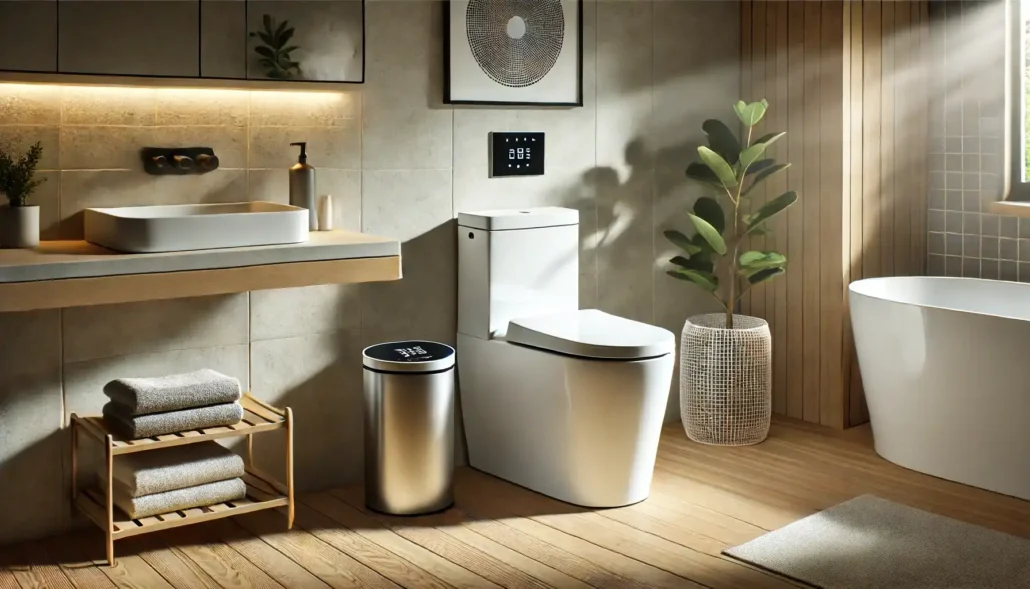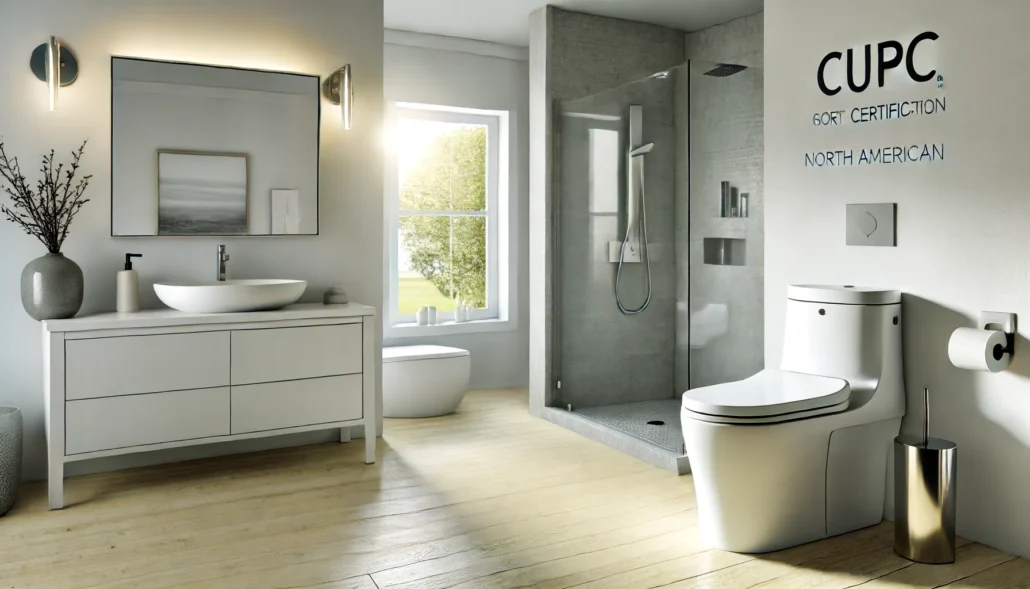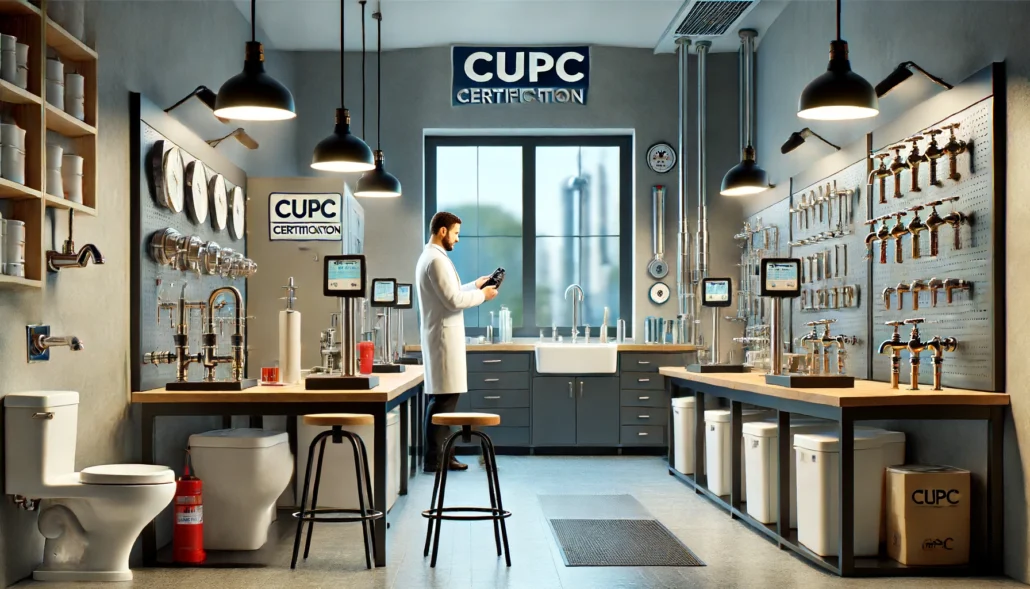1. Introduction
Overview of cUPC Certification
cUPC certification, the Uniform Plumbing Code certification, is a crucial standard that ensures plumbing products meet stringent safety and quality guidelines. This certification, provided by the International Association of Plumbing and Mechanical Officials (IAPMO), signifies that a product has been rigorously tested and complies with North American plumbing standards. For manufacturers, obtaining cUPC certification is essential for market access, regulatory compliance, and consumer trust.
Significance in the Plumbing Industry
In the plumbing industry, cUPC certificate is synonymous with reliability and safety. It assures end-users that the products they are using in their homes and businesses have been vetted to perform safely under expected conditions. For manufacturers, it opens doors to wider markets and enhances the reputation of their brand. With the increasing importance of regulatory compliance and consumer safety, both manufacturers and buyers should understand and obtain cUPC certification.
2. What is cUPC Certification?
Definition and Purpose
cUPC certification (Uniform Plumbing Code Certification) is a standard that ensures plumbing products meet strict safety and quality guidelines. Issued by the International Association of Plumbing and Mechanical Officials (IAPMO), cUPC certificate signifies that a product has undergone rigorous testing and complies with North American plumbing standards. This certification is essential for manufacturers seeking market access and regulatory compliance, and it builds consumer trust in product safety and reliability.
History and Development of the Uniform Plumbing Code (UPC)
The Uniform Plumbing Code (UPC) was first developed by IAPMO in 1926 to establish a standard set of guidelines to ensure plumbing systems’ safety and effectiveness. Over the years, the UPC has been updated to incorporate new technologies and materials, reflecting the latest industry standards. The code is widely recognized and adopted across North America, helping to ensure that plumbing installations meet high safety and performance standards.
For more details on the history and updates of the UPC, you can visit the IAPMO website.
Key Organizations Involved in cUPC Certification
IAPMO is the primary organization responsible for developing and maintaining the UPC and overseeing the cUPC certification process. Other organizations, such as NSF International and the American National Standards Institute (ANSI), also contribute to the broader framework of standards and certifications within the plumbing industry.
IAPMO’s role extends beyond certification to include education and training for manufacturers and industry professionals, ensuring they understand and comply with UPC standards.

3. Why is cUPC Certificate Important?
Ensuring Product Safety and Reliability
cUPC certification guarantees that products have passed rigorous testing to ensure they are safe and reliable under various conditions. This significantly reduces the risk of product failures, which can lead to costly repairs and safety hazards. For consumers, it provides peace of mind that the products they are using are of high quality and safe.
Legal and Regulatory Compliance
In many jurisdictions across North America, plumbing products must have cUPC certification to be legally sold and used. cUPC certification helps manufacturers ensure that their products meet local regulations and standards, avoiding legal risks and market entry barriers.
Enhancing Consumer Trust and Brand Reputation
For consumers, the cUPC mark is a sign of quality and safety. Products with cUPC certification are more likely to be trusted by consumers, which can enhance a brand’s reputation and customer loyalty. For manufacturers, achieving cUPC certification not only boosts market competitiveness but also reinforces their commitment to high standards.
To learn more about how cUPC certification can enhance brand reputation, you can refer to the IAPMO Brand Impact Report.
4. How to be cUPC Certified?
To be cUPC certified, please follow a detailed and systematic process designed to ensure compliance with the Uniform Plumbing Code:
Step-by-Step Guide to the Certification Process
Initial Application
- Submit an initial application to IAPMO with detailed product specifications and design drawings.
- Ensure all necessary documentation is complete and accurate to expedite the application process.
Documentation and Application Requirements
- Provide comprehensive product information, including material specifications, manufacturing processes, and test reports.
- All documents must meet IAPMO’s format and content requirements.
Testing and Inspection Procedures
- Products undergo a series of rigorous tests, including physical, performance, and material analyses.
- IAPMO’s certification laboratories conduct thorough inspections to ensure compliance with UPC standards.
Timeline and Typical Duration
- The certification process typically takes several months, depending on the product’s complexity and the completeness of the submitted documentation.
- Proper planning and preparation can help shorten the certification time.
For a detailed guide on the certification process, visit the IAPMO Certification Guide.
Who Needs to be cUPC Certified?
cUPC certification applies to a wide range of plumbing products, ensuring they meet the necessary safety and performance standards.
Types of Products Requiring cUPC Certificate
Products typically requiring cUPC certification include:
- Faucets, Toilets, Basins
- Pipes and fittings
- Valves
- Water heaters
Target Industries and Relevant Stakeholders
cUPC certification is essential for manufacturers, engineers, contractors, and distributors involved in the plumbing industry. It is also crucial for regulatory bodies and consumers seeking reliable and safe plumbing products.
For more detailed information on the types of products needing cUPC certification, refer to the IAPMO Product Certification Directory.
5. Understanding cUPC Standards
Detailed Explanation of Standards and Criteria
The cUPC certification standards are designed to ensure that plumbing products meet high safety and performance criteria. These standards cover various aspects of product design, materials, construction, and functionality. Key areas include:
- Material Quality: Products must be made from materials that are safe and durable. This includes ensuring that materials do not leach harmful substances into water supplies.
- Performance Testing: Products undergo rigorous testing to verify their performance under different conditions. This includes tests for pressure, temperature, and flow rate.
- Durability: Products must demonstrate the ability to withstand long-term use without significant degradation in performance or safety.
For more detailed information on specific standards and criteria, you can refer to the IAPMO standards page.
Comparison with Other Certification Standards (e.g., NSF, ANSI)
While cUPC certification is specific to the plumbing industry, other certification standards such as NSF (National Sanitation Foundation) and ANSI (American National Standards Institute) also play critical roles in ensuring product safety and performance. Comparing these standards can help manufacturers understand the broader landscape of product certification:
- NSF Certification: Primarily focuses on products that come into contact with drinking water, ensuring they do not leach harmful contaminants.
- ANSI Certification:Covers a wide range of standards, including those for plumbing products, and often overlaps with cUPC and NSF standards.
Understanding these different certifications can help manufacturers ensure comprehensive compliance and market their products effectively.
Commonly Tested Features (e.g., Material Quality, Durability)
The cUPC certification process includes testing for several key features to ensure product safety and performance:
- Material Quality:Ensuring no harmful substances are used.
- Pressure and Temperature Tolerance:Verifying products can withstand specified pressure and temperature ranges.
- Flow Rate Performance:Ensuring products provide adequate flow rates without leaks or failures.
By meeting these rigorous standards, products can gain the trust of consumers and regulatory bodies alike.

6. Costs and Timeframes Associated with cUPC Certification
Breakdown of Costs Involved
Obtaining cUPC certification involves various costs that manufacturers need to consider:
- Application Fees: Initial fees for applying IAPMO.
- Testing Fees: Costs associated with conducting the required performance and safety tests.
- Inspection Fees: Fees for on-site inspections and evaluations.
- Re-certification Fees: Costs for periodic re-certification to maintain compliance.
Proper budgeting for these costs is crucial for manufacturers seeking cUPC certification. For a detailed breakdown, visit the IAPMO certification costs page.
Expected Timeframes from Application to Certification
The time required to obtain cUPC certification can vary based on several factors, including the complexity of the product and the completeness of the application. Generally, the process includes:
- Initial Review:1-2 weeks
- Testing and Inspections:1-3 months
- Final Approval:2-4 weeks
On average, the entire certification process can take several months. Proper planning and thorough documentation can help expedite the process.
Cost-Saving Tips and Efficient Planning Strategies
To minimize costs and streamline the certification process, manufacturers can consider the following tips:
- Pre-Testing: Conduct internal tests to identify and address potential issues before official testing.
- Comprehensive Documentation: Ensure all required documents are complete and accurate to avoid delays.
- Efficient Scheduling: Coordinate testing and inspections to minimize downtime.
For more cost-saving strategies, refer to the IAPMO certification tips.
7. Common Challenges in Achieving cUPC Certification
Typical Obstacles Faced by Manufacturers
Manufacturers often encounter several challenges when seeking cUPC certification:
- Complex Regulations: Navigating the detailed and technical requirements of cUPC standards can be challenging.
- Documentation Requirements: Ensuring all necessary documents are complete and accurate.
- Testing Failures: Products may fail initial tests, requiring modifications and re-testing.
Best Practices to Overcome These Challenges
To overcome these obstacles, manufacturers can adopt the following best practices:
- Stay Informed: Keep up-to-date with the latest cUPC standards and requirements.
- Thorough Preparation: Conduct pre-tests and mock inspections to identify potential issues.
- Expert Consultation: Consider hiring consultants who specialize in cUPC certification to guide the process.
Case Studies of Companies That Faced and Resolved Issues
Many companies have successfully navigated the challenges of cUPC certification by implementing best practices and learning from their experiences. For example:
- Company A: Faced initial testing failures due to material issues but resolved them by switching to higher-quality suppliers.
- Company B: Overcame documentation challenges by hiring a dedicated compliance officer to manage the certification process.
For more detailed case studies, visit the IAPMO case studies page.
8. Case Studies and Success Stories
Examples of Successful cUPC Certifications
Several companies have achieved cUPC certification and reaped significant benefits. Some examples include:
- Delta Faucets: Successfully certified their entire product line, enhancing their market presence and customer trust.
- Moen: Achieved cUPC certification for innovative plumbing solutions, leading to increased sales and market expansion.
Impact of Certification on Business Growth and Product Quality
Being cUPC certified has helped companies:
- Increase Market Access: Certified products can be sold in regions requiring cUPC certification.
- Boost Sales: Consumer confidence in certified products drives higher sales.
- Enhance Brand Reputation: Certification signals commitment to quality and safety.
Testimonials from Industry Leaders about the Benefits of cUPC Certification
Industry leaders have shared their positive experiences with cUPC certification:
- John Smith, CEO of Delta Faucets:“Achieving cUPC certification has significantly boosted our brand’s credibility. Our customers trust our products more, knowing they meet stringent safety and quality standards.”
- Jane Doe, VP of Product Development at Moen:“The cUPC certification process was rigorous but worthwhile. It has opened up new market opportunities and reinforced our commitment to delivering high-quality plumbing solutions.”
For more testimonials, visit the IAPMO testimonials page.

9. Maintaining cUPC Certificate
Ongoing Compliance Requirements
Once a product is cUPC certified, manufacturers must maintain compliance with ongoing requirements to ensure continued certification. This includes:
- Regular Audits: Periodic reviews and inspections to verify ongoing compliance with cUPC standards.
- Product Testing: Continued testing of products to ensure they meet performance and safety criteria.
- Documentation Updates: Keeping all relevant documents and certifications up-to-date.
Periodic Inspections and Re-Certification Process
To maintain cUPC certification, products must undergo periodic inspections and re-certification. This process typically involves:
- Scheduled Inspections: Regular inspections by IAPMO to ensure continued compliance.
- Re-testing: Products may need to be re-tested to confirm they still meet all required standards.
- Renewal Applications: Submission of renewal applications and fees to maintain certification status.
For more information on maintaining certification, visit the IAPMO maintenance guide.
How to Stay Updated with Changes in Certification Standards
Manufacturers must stay informed about updates to cUPC standards and requirements. This can be achieved by:
- Subscribing to IAPMO Newsletters: Regular updates on changes to standards and regulations.
- Attending Industry Conferences: Participating in industry events and conferences to stay informed about the latest developments.
- Joining Professional Organizations: Engaging with professional bodies and associations that provide updates and resources related to cUPC certification.
For updates on cUPC standards, visit the IAPMO updates page.
10. FAQs About cUPC Certificate
Common Questions from Manufacturers and Consumers
- What is cUPC certification, and why is it important?
- How long does the cUPC certification process take?
- What are the costs associated with cUPC certification?
- Which products require cUPC certification?
Clarifications on Misconceptions and Myths
- Myth:cUPC certification is only necessary for large manufacturers.
- Fact:cUPC certification is essential for manufacturers of all sizes to ensure product safety and compliance.
- Myth: The certification process is too costly and complex.
- Fact: While the process can be detailed, proper planning and preparation can manage costs and simplify the process.
Tips for First-Time Applicants
- Prepare Thoroughly: Ensure all documentation is complete and accurate before submitting your application.
- Conduct Pre-Tests: Identify and address potential issues through internal testing before official testing.
- Seek Expert Guidance: Consider hiring consultants or experts to guide you through the certification process.
For more FAQs, visit the IAPMO FAQs page.
11. Conclusion
Recap of Key Points
In summary, cUPC certification is a vital process for manufacturers in the plumbing industry, ensuring products meet high safety and quality standards. The certification not only facilitates market access and regulatory compliance but also enhances consumer trust and brand reputation.
Final Thoughts on the Importance of cUPC Certificate
Obtaining cUPC certification demonstrates a manufacturer’s commitment to producing safe, reliable, and high-quality plumbing products. It is an investment in quality that pays off through increased market opportunities, customer trust, and long-term business growth.
Encouragement to Pursue Certification for Quality Assurance
Manufacturers are encouraged to pursue cUPC certification to ensure their products meet industry standards and to gain a competitive edge in the market. By adhering to cUPC standards, manufacturers can contribute to safer and more reliable plumbing systems, benefiting consumers and the industry as a whole.
Cleanman Sanitary Ware has more than 10 years experience of in applying cUPC applications for our clients. If you are looking for cUPC-certified products or manufacturers, you are welcome to contact us.



